How to Sell Books on Amazon in 2024
If you’re looking for a simple way to make extra cash, consider selling your used Amazon books. The marketplace hosts a large number of third-party retailers, made up of individuals or companies who sell their products on the website.
According to a report released by Business Insider, third-party sellers accounted for 58% of Amazon’s revenue in 2018, a major improvement from 1999 when they accounted for just 3% of its gross merchandise revenues. For those who would like to get in on it but are new to selling on Amazon, here’s how to get started.
Four Reasons Why You Should Sell Books On Amazon

I think anyone who reads this article has a reason to read it. Most people just want to get rid of those old books that have been in their closets for years. Others want to sell professionally, and they’re dealing with the idea of starting by selling Amazon books. No matter what excuse you’ve got. This segment deals with five very good reasons why you should be selling Amazon books.
You can make decent income selling books on Amazon

Here is the simplest reason: you can make money by selling Amazon books. Dave Hamrick from Jungle Scout says that he has created a profitable Amazon company that moves thousands of books a month by selling used Amazon books. It doesn’t matter whether you want to sell your used Amazon books or buy new ones and resell them. You will make money in both cases.
You may use this article’s tactics to sell used Amazon books or to sell new ones. It is also really useful to save some money for future investment. And if you want to start a real Amazon company later, selling Amazon books might be your best bet.
People want to buy books

Nowadays, there are e-books, digital journals, and almost everybody is searching for information about Wikipedia, rather than an old-school encyclopedia.
One would assume that the demand for books has fallen dramatically in recent years. This is not the case, according to Google Trends. People all over the world have been looking for Amazon books for the last five years, and the number remains almost the same. And yes, the global interest in Amazon Kindle has diminished over the last five years!
The market for books is massive. In 2018, the U.S. book publishing industry’s net sales amounted to around USD 25.82 billion. USD 10.28 billion has been produced in bookshops. And, as we all know, bookstores are selling paper books, not e-books. In addition, 65 percent of people in the US read more than one book a year. An average American citizen reads 12 books a year.
Amazon is a great platform to sell books
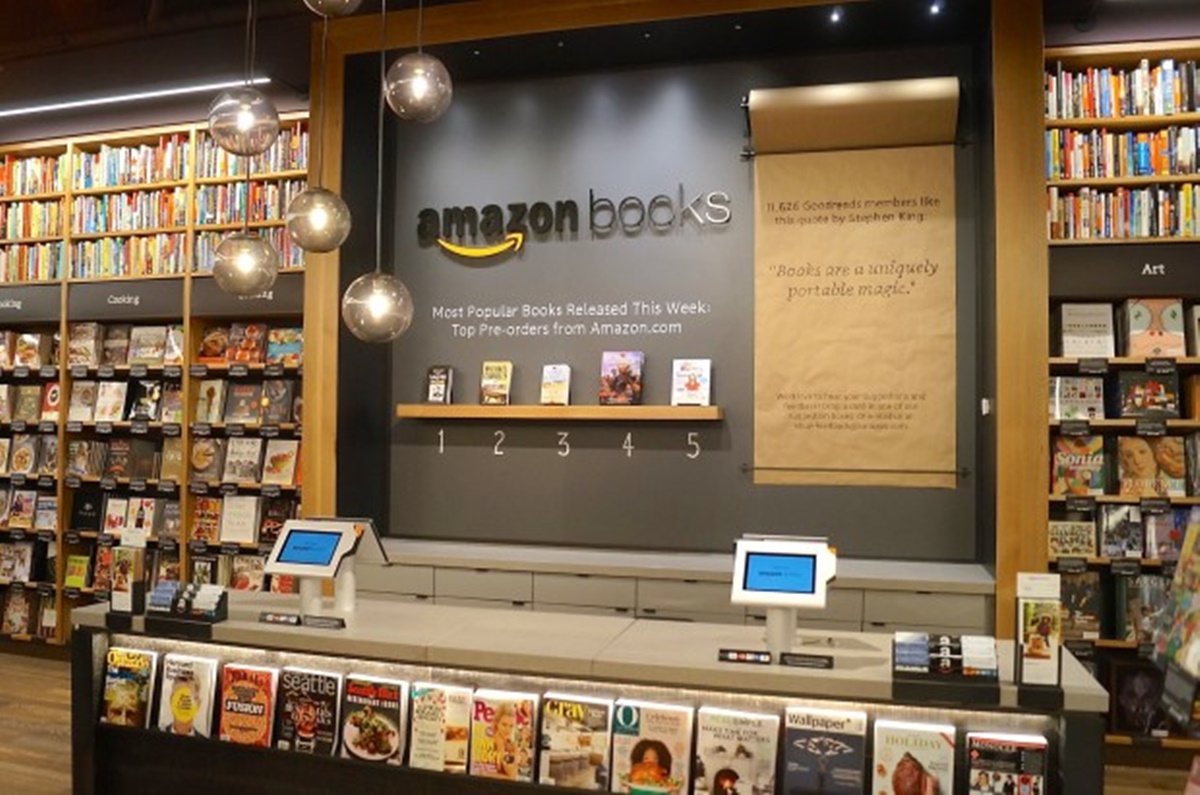
Amazon is one giant marketplace where thousands of items are sold on a regular basis. Books are a large part of these products.
Here are some facts about Amazon:
- Net Sales 2019: 280.5 billion USD
- Amazon Monthly traffic: 209.7 Mio.
- Active customer accounts: 300 million
On top of that, Amazon is the world’s largest online market for goods. 59 percent of 16-36 Years-Olds go to Amazon before any other e-commerce platform. Currently, if you want to sell online, there’s no way around Amazon. Some people out there are talking of selling eBay, but I wouldn’t suggest it. However, you should read our article about the selling of Amazon vs. eBay to get your own impression.
Amazon makes your life easier
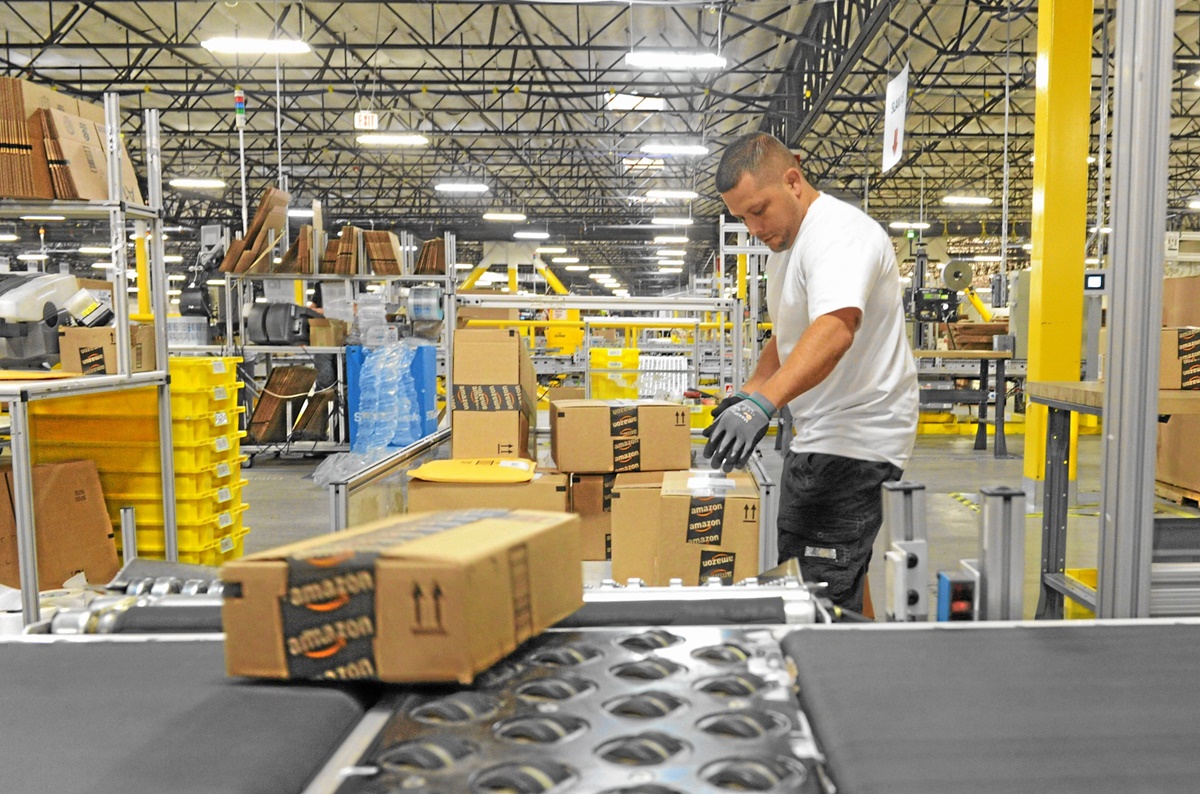
You can select between three ways to sell your goods on Amazon.
- Processing by you (FBM): You can list your product on Amazon, bundle and ship your goods to your customers. Amazon Vendors (AMZ): You can sell your product to Amazon via the central merchant services. This is also useful to vendors who can sell a lot of inventory quickly.
- Processing by Amazon (FBA): You list your product on Amazon, but Amazon shops, bundles and delivers the product to the customers. FBA sellers’ goods are also eligible for Amazon Prime, which means quick and free shipping.
FBA is a common way for new vendors to get started on Amazon. That’s because FBA sellers just need to think about selling goods, not about storage or shipping. In the end, you will determine whether you want to sell your goods via FBA Service or FBM. As soon as your Amazon business starts to expand, I suggest that you turn to FBA.
The FBA service of Amazon, in particular, offers the following benefits:
- Connect to Amazon’s entire logistics network
- Selection, packaging, and shipment of products as soon as they have been delivered
- Customer services, such as returns, complaints, etc., on behalf of the supplier.
- FBA products are qualified for Amazon Prime, which will greatly increase the sales of your products.
- You can also use FBA by selling your used Amazon books.
The average Amazon Prime customer spends $1400 a year on Amazon, while regular customers spend just $600 on Amazon. That’s another $800! So once your Amazon business starts to grow, you can switch to FBA and give your business an extra boost.
Related post:
- How to Sell on Amazon? A Guide To Start Quickly!
- How Much Does It Cost to Sell on Amazon?
- What is FBA? 20+ Tips to Successfully Sell on Amazon FBA
- How to Find Products to Sell on Amazon
How To Source Books To Sell On Amazon?
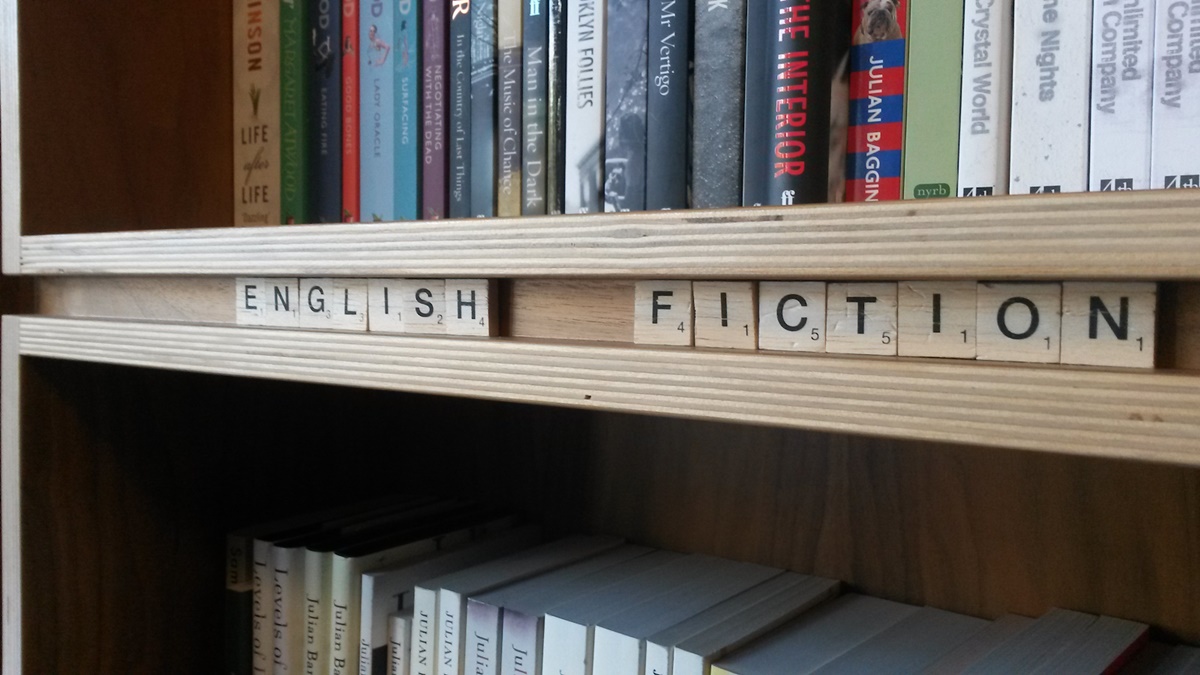
Where To Find Old Books?
You can start selling used Amazon books on any budget. It is a low-risk, low-cost, quick way to get started and highly recommended for beginners. Here are a couple of places where you can find them:
Your Bookshelf
Nothing is better than a zero-cost inventory that has already been neatly processed! Check your bookshelf (and closet/basement/floor) for any books in good condition that you’re willing to share with. List all of them, even though they have no chance of a sale. Remember to set these books aside so you won’t unintentionally lend or lose one of them! Now they’re an inventory. Nobody’s going to damage your inventory.
Yard Sales and Flea Markets
People want to get rid of old books as they pass about. Yard sales and flea markets are perfect things to shop, including fresh and gently used books. There are two choices here: buy them in bulk or select the right one.
Buy in Bulk
Most people would gladly sell you a whole box of books for a fraction of the cost of buying them one at a time because that means they get rid of a lot at once. You will have to throw most of them (preferably in a donation bin), of course.
But more often than not, you ‘re going to find enough winners to make a decent profit. Plus, the time you save is a huge difference! Always give the contents of the package a good look before you make the purchase. Look for positive signs like the writers that you know, and bad signs like mildew.
The Web
There are plenty of sites online to buy a variety of second-hand books. You can place your bet on books on sites like eBay, Craigslist, and even specialized used book wholesaling sites like UsedWholesaleBooks by Thriftbooks.
Due to the expense of shipping and the inability to test the book’s quality, this is riskier than purchasing a box of books at a yard sale.
Buying small lots on eBay or Craigslist risks little financially, but means paying more for each book. Buying big loads off wholesale sites like UsedWholesaleBooks means spending a lot of money and having tons of storage, but you get a much lower price per book. Thriftbooks are highly regarded, but many places that claim to sell wholesale are scams. Always test the efficiency of the wholesaler before you put an expensive order!
I only recommend this approach if you can afford to lose money on your order. Most of the time, this is going to make a solid profit, but you have to buy smart and be prepared for an occasional batch of people.
Used-Book stores
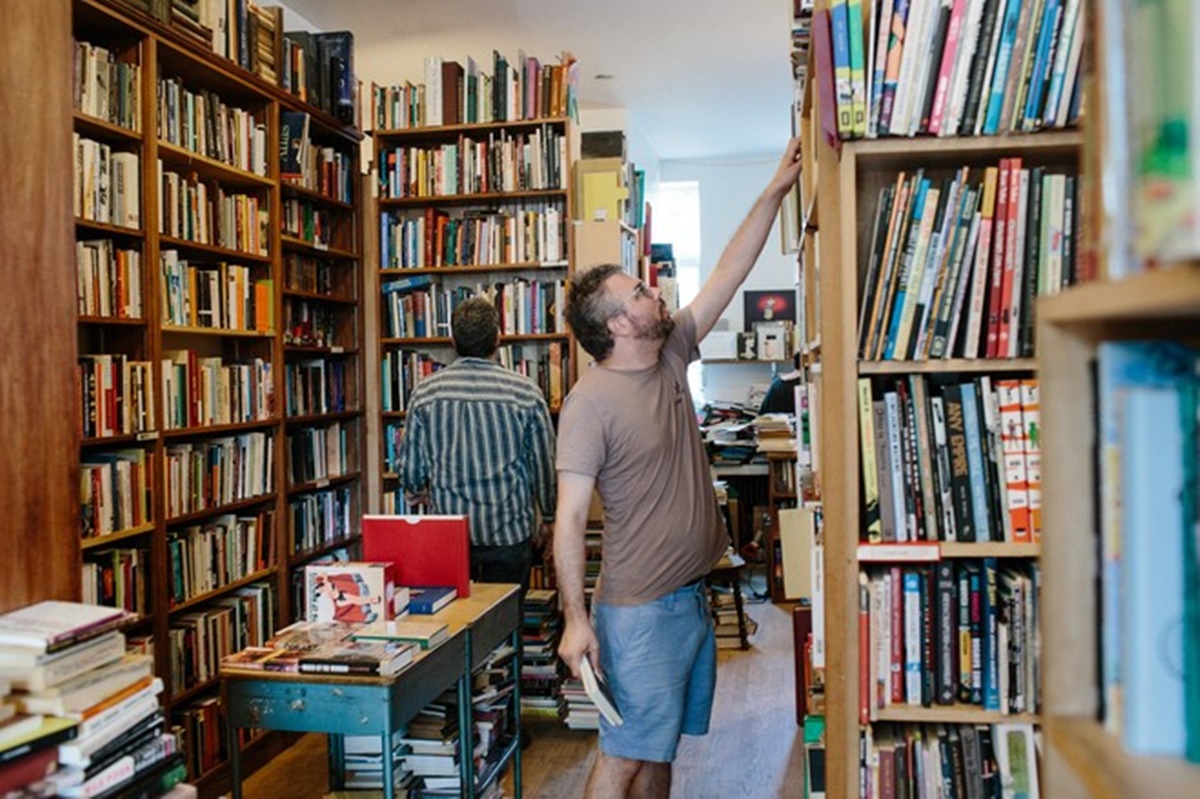
Used-book shops sometimes sell at rates that are too high to make a profit (usually much higher than Amazon rates) but often have good offers. Plus, it’s always worth asking about buying their unsold inventory whenever they decide to clear up the shelf space. It is twice as much if they don’t sell themselves on Amazon.
Libraries
Libraries also host sales to free up inventory. Get out to the libraries in your area and find out whether and when they’re available, and sign your calendar. A fast online search almost always reveals something, too!
Estate Sales
eBay sellers enjoy estate sales. They often deliver rock-bottom deals on libraries full of old, antique, and collectible books. If you’re not familiar with estate sales, they ‘re basically a classier version of yard sales. They are usually done after the death of a homeowner or before moving to a smaller living room. They also run as auctions and allow the attendees to register.
You ‘re not always going to find books worth selling at estate sales (or win an offer for them). But if you’ve got an eye for antiques and collectibles, there are few better places to find them.
Other Opportunities
Keep your eyes wide open and explore. A number of thrift stores are selling second-hand pocket change books. Nonprofits like churches and schools often accept donations from used books and then resell them to peanuts. If you donate your unsold books to these organizations, they might even be able to let you go home with a couple of them.
Where To Find New Books?

Selling new Amazon books is a tough type of business, and I’m not recommending one for beginners. But if you pull it off, it can be lucrative and steady.
Be very careful to choose the right books for sale here. Amazon sells the most recent bestsellers directly, often for as little as half of the list price. Plus, there could be too little demand for new books with the reasonable competition. You ‘re going to need a lot of business experience to make the right decisions. Here’s where to get some new books to sell:
Wholesalers
There are a number of famous, well-known wholesalers out there. Ingram and Baker & Taylor are two giants of this kind. You will find other big wholesalers in this informative post, even though it is intended for writers. Such major wholesalers have a great deal of control.
They can buy from publishers at crazy-low rates, and then pass a lot of the savings on to you. But how much of your savings depends on your purchasing power.
If you buy thousands of books on a monthly basis, you can often negotiate lower rates with wholesalers. But if you can only buy in a handful of people, you’ll always face high prices that seem impossible to profit from.
Your goal should be to establish a good business relationship with your wholesalers. The more you deal with one and the more you buy from them, the lower the rates you ‘re going to be able to negotiate. You would have a hard time negotiating with big wholesalers like Ingram because you’re only one of their million customers. They do often have challenging specifications and applications. Yet they ‘re safe and secure.
With smaller wholesalers, you ‘re going to have an easier time closing a deal and driving down prices. But you’re also going to have to find them, make sure they ‘re not scamming you, and determine if they’re going to do their job. Ultimately, they ‘re only going to be able to drop their costs so far. They can’t afford the same discounts from publishers as the big boys.
Distributors
Distributors tend to keep looking for new retailers to buy the inventory they have stocked up, so they can come to you once you’re founded. You should reach out to them, too. IBPA provides a list of contact information book wholesalers and distributors.
Yet, note to be cautious of the scams! Just because the company’s on the list doesn’t mean it’s safe. However, remember that the contact information is for publishers, not stores, so you may need to snoop out the right person to call.
Distributors charge a large fee to publishers, so you pay this cost when you purchase from one. They aren’t the cheapest book suppliers out there. However, they also have exclusive rights to sell those books, and often they are the only source of a hot new title.
Publishers and Authors

You can bypass wholesalers and retailers and purchase books directly from the publisher. And big publishers like Penguin will sell to you. You just need to decide to purchase hundreds or thousands of books at once. It’s a big-money plan. You need the capital to pay four or five figures at a time. You ‘re always going to gamble a lot on a single buy, but you’re also going to land unbeatable prices — and unbeatable profits.
Another choice is to buy from small publishers and self-published authors. Because they often lack the weight required to attract the attention of major wholesalers, they can be delighted to sell any number of books to you at low prices. Only bear in mind that most self-published books are poor, and most small publishers have only a niche audience. Be highly selective.
How To Price Your Books On Amazon?

Sourcing and selling good books to Amazon is just part of the sales process. In reality, to get sales, you’ve got to get the right price for your books. With used books, it’s not as easy as matching the price of the Buy Box. Let’s take a look at certain factors in book pricing.
Amazon’s buy boxes
When you first load a product description page for an Amazon book, it may look a little odd for you. That’s because Amazon has a lot of boxes to buy books. I’m going to mention the various types of Buy Boxes that you might see in the book listing:
- No Buy Box (Suppressed)
- Just a Used Buy Box
- Just a New Buy Box
- New Buy Box + Rental Buy Box
- Rental Buy Box + Used Buy Box
- New Buy Box + Used Buy Box
- Rental Buy Box + Used Buy Box + New Buy Box
Here’s what the last one (three different Buy Boxes) looks like when someone clicks the “Buy Used” radio button:
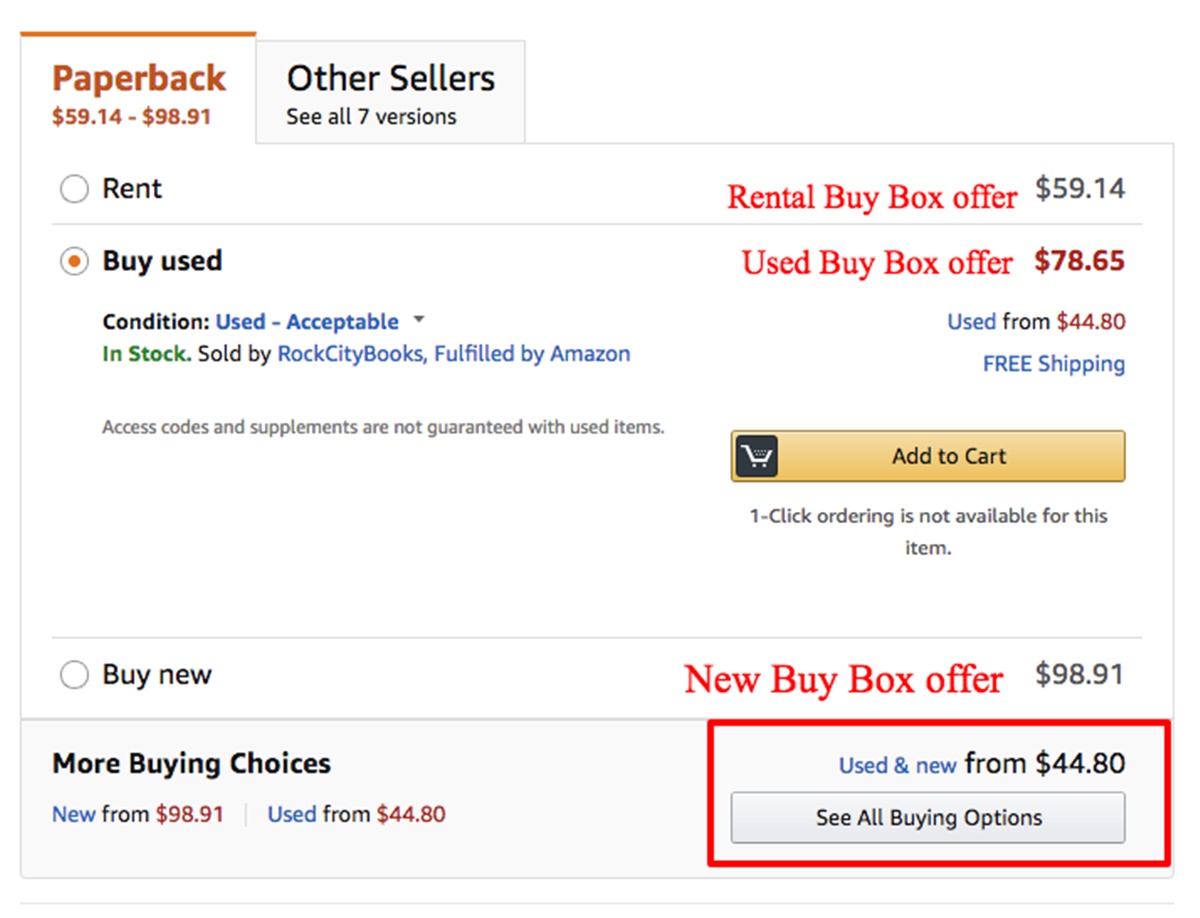
There is also a button at the bottom where you can see all the buying options. And, as a used bookshop, the pricing choices are:
- Match the lowest FBA price.
- Match the Used Buy Box price
Competition With Amazon
The New Buy Box is effectively exclusive to Amazon. While they do share theNew Buy Box with third-party vendors as of 2017. If you’re just selling used books, you don’t have to think about competing directly with Amazon for the Latest Buy Package. But that doesn’t mean you should disregard Amazon ‘s price while they’re on the list!
If Amazon sells a book in New Condition, then its price is effectively the “ceiling” price. So, if Amazon offers a new textbook for $79.99, then the Used price will be less than that. No one will pay more for your Used Book than Amazon’s New Copy as long as Amazon is in stock as a seller. Of course, there are a number of books that Amazon (as a seller) has never published or is no longer offering. On those, you ‘re really just competing with other third-party deals.
Pricing based on the condition of your books
Some bookshops spend a lot of time thinking about the sub-condition of their used books when it comes to pricing. Sub-condition refers to the state description following the word used (Acceptable, Good, Very Good, Like New).
I find that buyers (especially textbook buyers) are not really willing to pay a lot more for a really good book than a mediocre one. When pricing your product, I ‘d only concentrate on matching the lowest FBA product (even if that deal is a different situation than your book).
If you are in doubt, just use your best judgment. For example, if the lowest FBA bid is an Acceptable Book and the seller has confirmed that the book has water damage, I would be able to price my “Good” book higher. In general, I find that sub-condition is important to follow Amazon’s TOS to have satisfied customers, but it’s not something I spend a lot of time on while I’m pricing.
How To Start Selling Books On Amazon?

Before you can start selling books, you ‘re going to have to set up your vendor account and to get a vendor account, you ‘re going to need a shopper account first. Before you start, make sure you have the following information:
- Passport or Driver’s License
- Bank account information for Amazon to deposit money
- Credit or debit card for fee payments
- Credit card or bank statement
Note: Amazon will need to check your tax and payment details. It may take several days for Amazon to complete this process. So, don’t wait to start selling right away.
To create a seller account:
-
Go to Amazon.com.
-
To the right of the upper search bar, you can find “Hello, sign in.” Click here to go to the sign-in page. If you have already signed in, you will see “Hello,” followed by your name. Click here and you will be taken to the account tab. You should skip to Step 5 if this is the case.
-
If you already have a shopper ‘s account, you should sign in. If you don’t have an account, click the “Create your Amazon account” button at the bottom of the page. You will be asked to fill out your name, email address, and password. You ‘re going to have to open your mailbox to verify your email address.
-
You will, at this point, be signed in and your name will show up next to the search bar. Click on your name to go to your account page.
-
Scroll down to the “Other accounts” section, you’ll see “Seller.” Select this option to register yourself as a vendor account.
-
You’ll be taken to the Sell on Amazon page where you can set up your account, read the selling process, and view pricing and the FAQs. At this point, you will have to decide whether to become a professional seller or an individual seller.
- As a Professional Seller, you will need to pay $39.99 a month to list as many items as they want.
- As an Individual Seller, you won’t have a monthly fee, but pay $0.99 per item.
Read more: Amazon FBA Fees
Both options include the closing fees associated with the products you sell. So, if you’re planning to sell more than 40 products a month, becoming a professional seller is the most cost-effective alternative.
-
If you want to be a seller, click the “Start Selling” button in the center of the page or the top right corner of the page. It will open a menu where you can determine whether you want to be a professional seller or an individual seller.
-
There are now four steps you need to complete to set up your vendor account.
First, enter your name. If you’re an individual seller, that’s your name. If you are a professional seller, enter your business name and your email. Read and approve the agreement, then press “Next.”
Next, enter your email address, your “Business Display Name” (the one your customer will see), your website if you have one, and a cell number to use for verification purposes. You’ll need to search your phone number by getting a code through a text or phone call, and then type it on the web page.
Third, set up billing and depositing methods. The billing method is the credit or debit card that you want to use to pay your monthly fee, or the item fee, and any closing costs. The form of depositing is the bank account where Amazon can send you your payments.
Finally, you will need to go through a “Tax Information Interview.” It’s not a real interview, but it’s just a method for you to supply Amazon with your tax information. You may need to check whether or not you are a U.S. resident, enter your address and Social Security number, and enter your name by entering it. This will create a digital document called W-9. Verify that the information is right and press the “Submit Form.”
Read more:
-
Now you’re going through an identity verification process using a passport or driver ‘s license. Enter your details and upload the photos of your chosen identification type. Upload your bank or credit card statement with the account number and monetary values blacked out, but everything else needs to be visible.
-
That’s it! Now you need to wait. The verification process may take a couple of days to complete. When your account is verified, Amazon will notify you, and you can start selling.
How To Fulfill Orders When Selling Books On Amazon?
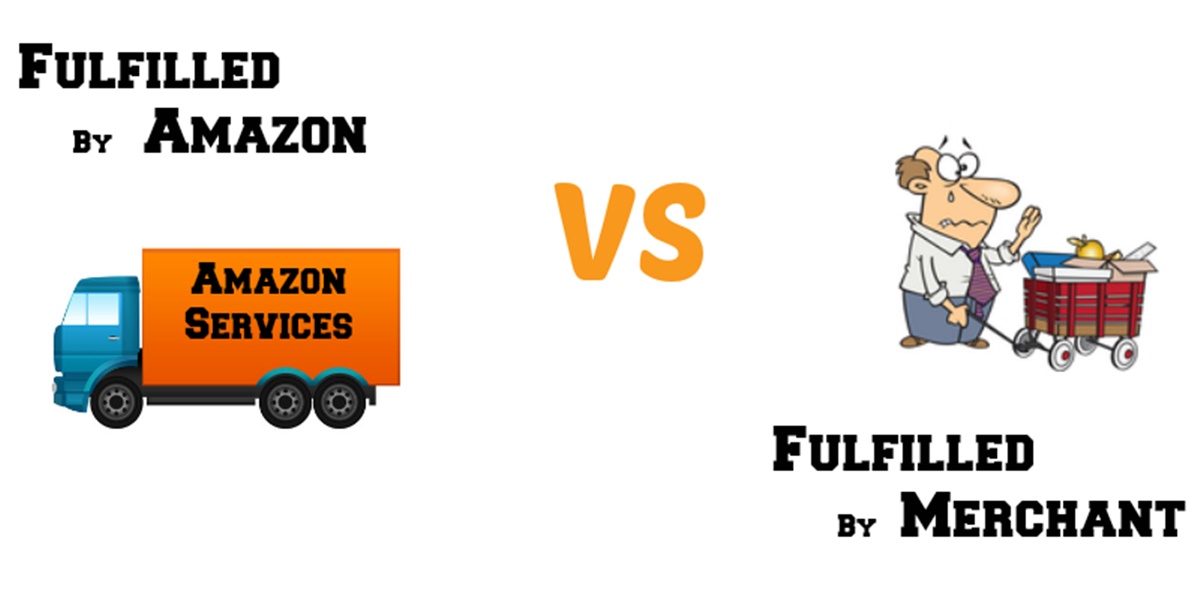
There are two ways that you can use to fulfill your orders on Amazon: FBA and FBM.
Fulfillment by Merchant (FBM)
Using this method, when a sale is made on Amazon, you pick, pack, and ship the book yourself using the carrier of your choice (e.g. FedEx, UPS, etc.). FBM retailers are also responsible for handling their own inventories.
And, when you measure your costs, remember to consider storage fees if you do not store your books at home, as well as shipping and handling expenses, and the amount of time it takes for you to prepare and mail your orders.
Use FBM if you have only a few orders to complete or if you have a large enough operation that the cost of shipping your orders is lower than that of Amazon. And again, you ‘re going to have to find a warehouse to store your books.
Fulfillment by Amazon (FBA)
With this method, when sales are made on Amazon, Amazon packs, and ships the book on your behalf. Amazon also stores your inventory for you and takes care of your customer service. Therefore, instead of paying storage, shipping, and delivery costs and labor costs on your own, you pay Amazon and FBA fees to cover those expenses.
Using FBA if you have a lot of orders to complete and your project is not big enough to have shipping costs lower than the necessary FBA fees. On the other side, you ‘re not going to need a place to store your books, because Amazon’s distribution centers will keep them for you before they sell.
Read more:
- How to Sell Used Books on Amazon
- What To Sell On Amazon? Find the Best Products
- How to Start Drop Shipping on Amazon
Final Words

Selling books is not an easy path to travel, but it will pay off big money if you can learn how to take it. I hope this article has been informative for you and can set you off on your journey to sell books on Amazon!
New Posts

How To Set Up Google Analytics 4 For Your BigCommerce Store






